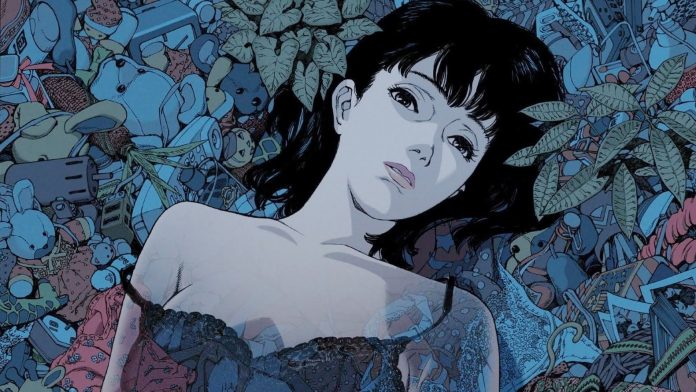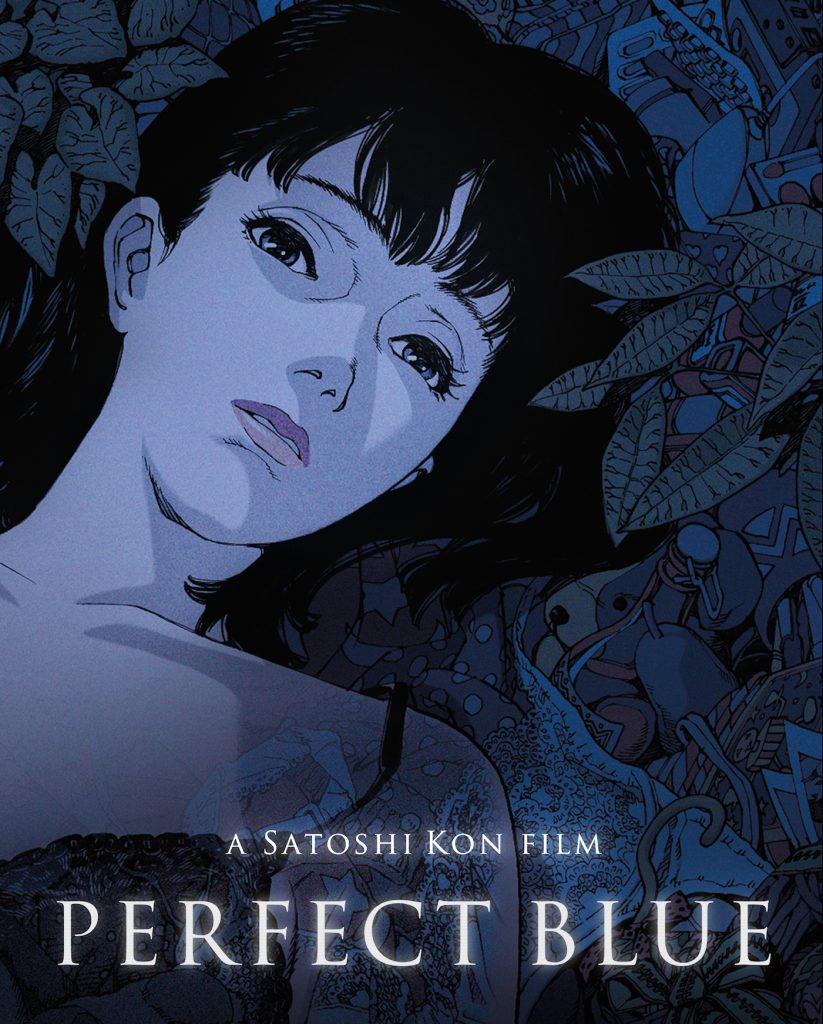Intertwined with scenes from her everyday life and her on-stage performance, the 21-year-old pop idol: Mima Kirigoe prepares to announce that she’s leaving her group, CHAM. She decides to make a change in her career. Her fans are transfixed, watching as she performs one last song like an angel of love. Among the shocked crowd lies one obsessive fan in particular. Mima is entirely unaware that this announcement would lead to more trouble and terror, than she could’ve ever imagined.
This choice is the foundation of the movie, Perfect Blue. Directed by mind-bending expert Satoshi Kon, written by Sadayuki Murai, and based on the novel Perfect Blue: Complete Metamorphosis by Yoshikazu Takeuchi. While Perfect Blue is an older anime film from 1997, its psychological thriller aesthetic has clearly stood the test of time. It presents well observed features, and an analysis reveals just how accurate such themes are in today’s time.
Mima’s transition in Perfect Blue
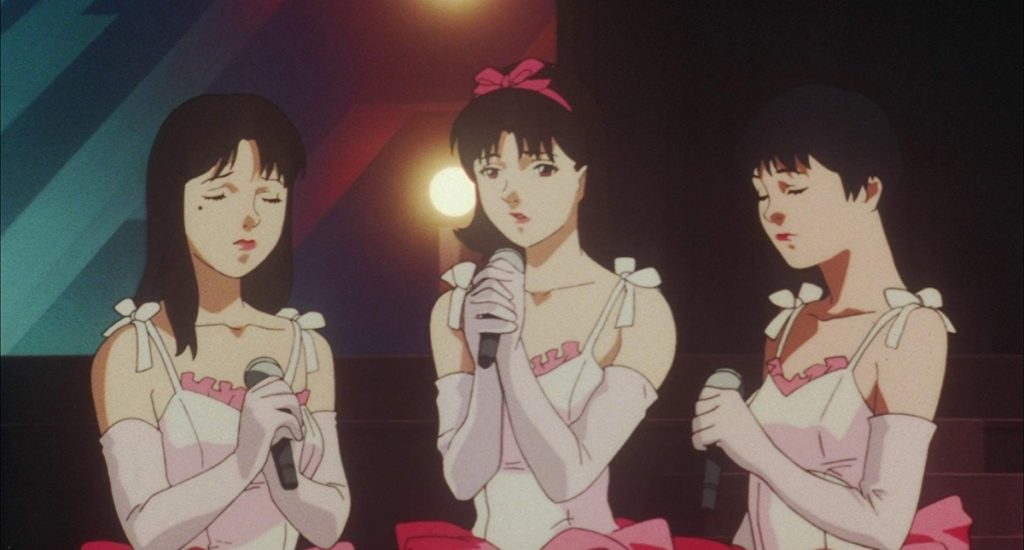
At the start of the film is Mima’s last performance before becoming an actress, but the life of a rookie actress and ex-pop idol isn’t all it seems. Unable to land significant roles because “pop idols are really hard to use,” Mima finally gets her chance, and it tests her resolve. She sees it as a “hurdle she has to jump over” to prove to her managers and fans that she wants to change. Leaving her clean reputation in the furthest corners of her mind.
Perfect Blue effortlessly transitions between Mima’s perception of reality and the actual state of the world itself. The viewer watches as Mima’s mind becomes lost in her role as an actress, unable to decipher each day and conversation from the TV series she stars in. Fans, stalkers, friends, or foes, can she even tell anymore?
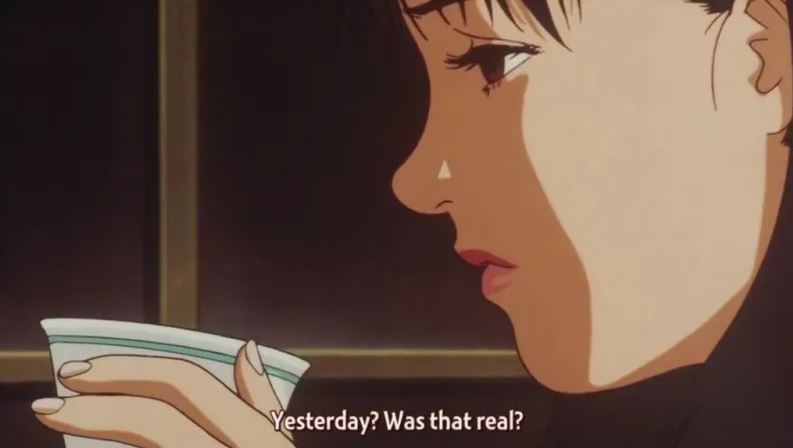
Her first acting scene is a simple one-liner that she repeats like a mantra: “Excuse me, who are you?” But behind the scenes, a fan letter explodes, opened by her unsuspecting talent manager and wounding his hand in the process. Small scraps of paper left behind read “The next one will be real.” From that moment on bloodshed follows her, leaving her in the very center of a string of murders.
Excuse me, Rumi, who are you?
Her manager Rumi, an ex-idol herself, struggles to support Mima’s decision to become an actress. And more specifically, the roles she takes on. Rumi never managed to see her pop star dream realized. She secretly envies Mima for making it bigger than she had, yet discarding it all for the sake of acting. Rumi, harboring this secret hatred for Mima, works from the sidelines to try and influence Mima’s choices. She resents Mima even more when she takes on roles that will drastically change her image. The manager watches as the pristine pop idol disappears through one choice after another.
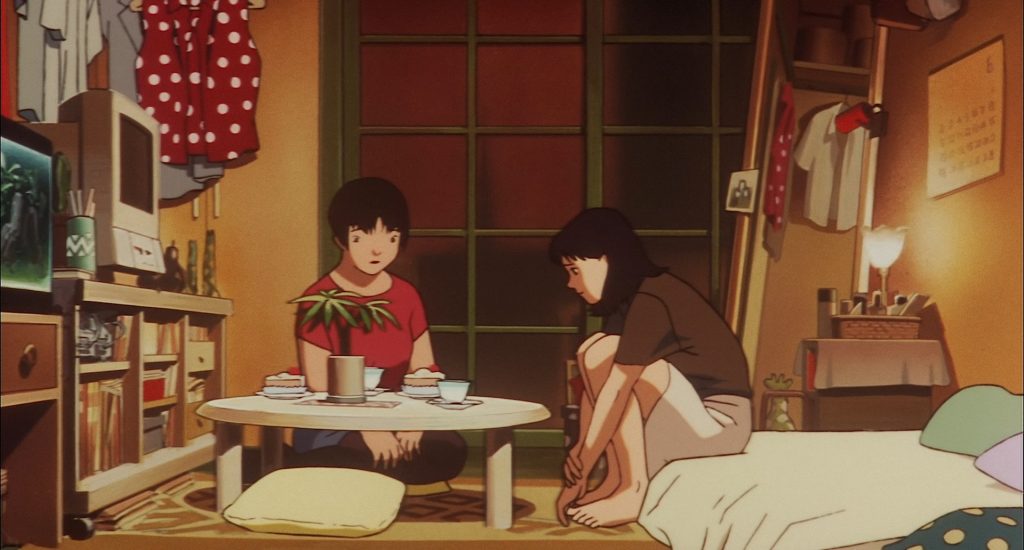
Mima’s desperation to be acknowledged as an actress, and her naivety, lead her to be taken advantage of by a photographer. Members of her old group CHAM surreptitiously mock her, remarking that she’d happily strip and reveal everything. After the photoshoot is published, Mamoru Uchida does his duty as Mima’s number one fan by purchasing every copy of the magazine he can get his hands on. Because his Mima, the real Mima, would never expose her body like that. With her name and reputation having been defiled, Mamoru makes it his goal to punish those responsible. Even if that means taking this imposter Mima out of the picture.
Mamoru, the stalker
Mamoru’s appearance is grotesque, the juxtaposition to Mima’s soft features. He’s unkempt, often appearing sweaty, contrasting the differences between him and Mima further. Additionally, his voice in both the English dub and original Japanese have an unnerving tone to them. It’s cracking and unstable, a portrayal of his instability.
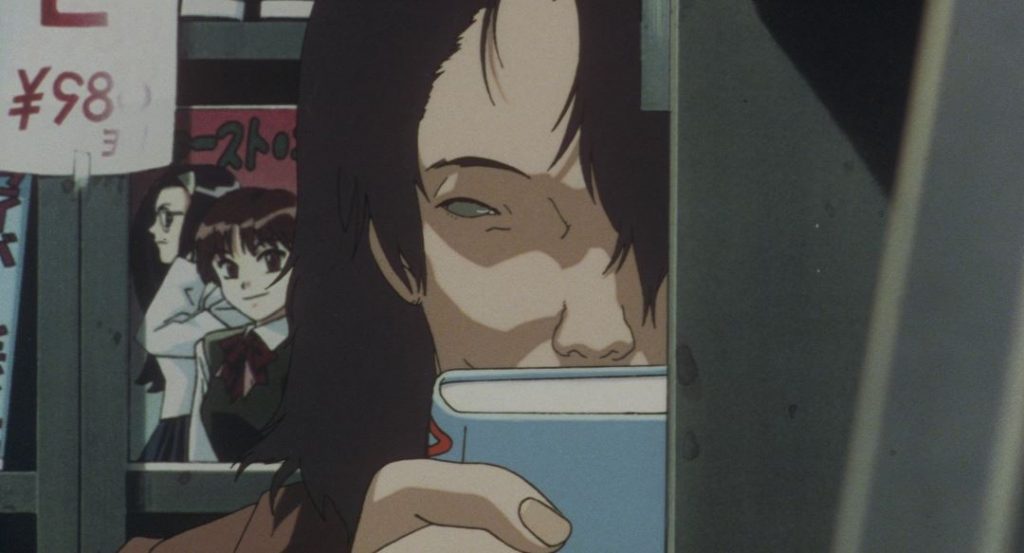
Finding Mamoru’s devotion as a fan suffocating, his presence constantly triggers Mima. This causes her to spiral into psychosis, resulting in her inability to orientate herself in the world.
From external conflicts to internal
Mima’s inability to move past her music career conflicts with her passion to become an actress, creating a split in her psyche. She finally finds a role that matches her potential, yet the expectations of her fans keep her mentally stationary. She’s powerless to move past the moment she gave up singing. Her inner strife is presented as she immerses her entire body into a bath, screaming “bastards” from under the water. This reflects her desire to wash away the sins committed in the name of becoming an actress. Along with hating how she was taken advantage of, and how she’s drowning in her own choices. Everything has left her feeling tarnished and filthy and she just wants it all to go away.
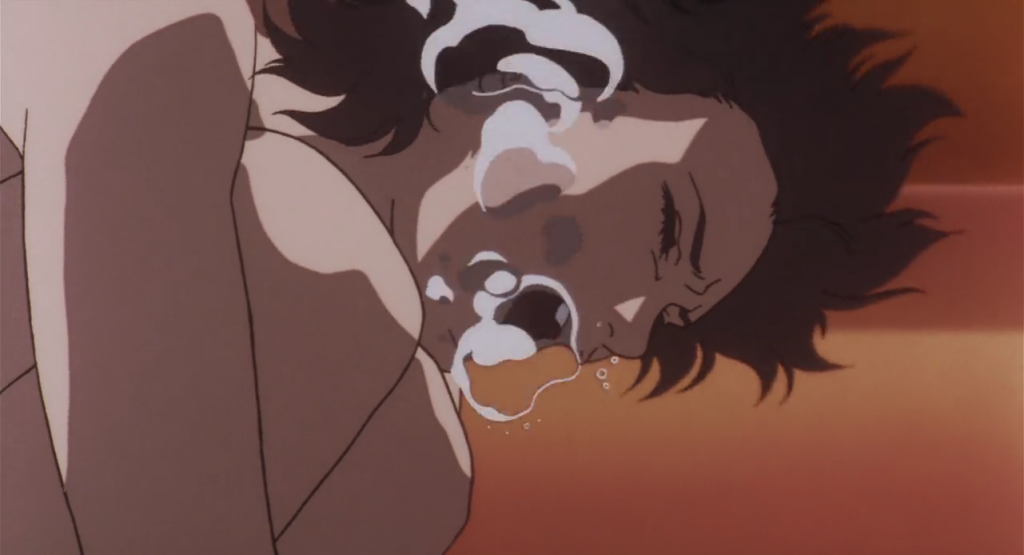
Sadly, for Mima, there’s no turning back once the decision has been made. She soon discovers that her actions have consequences.
Delving into Mima
Despite Mima’s optimistic and sincere personality, her theme song is very dark and brooding. The lower tones creep up on you, while light pings lead up to the piano melody, which in and of itself sounds disjointed. Each note is spaced far apart, creating an unnerving song. Soft, harp-like cues can be heard in the background, before the main chorus plays. It almost sounds sci-fi, a complete opposite from the up-beat pop music Mima sings.
Due to her oblivious personality, she’s unaware of the deception that surrounds her, and easily taken advantage of. She seemed to understand that the TV series would drastically change her image and help shed the role of pop idol. However, she didn’t seem mentally resilient enough to shoulder the burden. Perhaps she thought she wasn’t in a position where she could refuse, solidifying her role as a victim.
Perfect Blue tickles the brain
Perfect Blue’s deep-seated psychological and emotional impact on its characters forces you to contemplate the purpose of each scene. Leaving you to slowly piece together Mima’s world through her mental state. The creative direction is unique to many of Satoshi Kon’s mind-bending masterpieces. Even the subtle exchanges and choices for dialog like Mima’s single line “Excuse me, who are you?” hold so much value, and add more layers of nuance to the film.
This film could be endlessly interpreted, but whichever conclusion you come to, one result is the same: this is a must-watch film.
Studio: MADHOUSE
Release Date: August 5, 1997
Rating: R
Director: Satoshi Kon
Screenplay: Sadayuki Murai
Music: Masahiro Ikumi
Original Story: Yoshikazu Takeuchi


